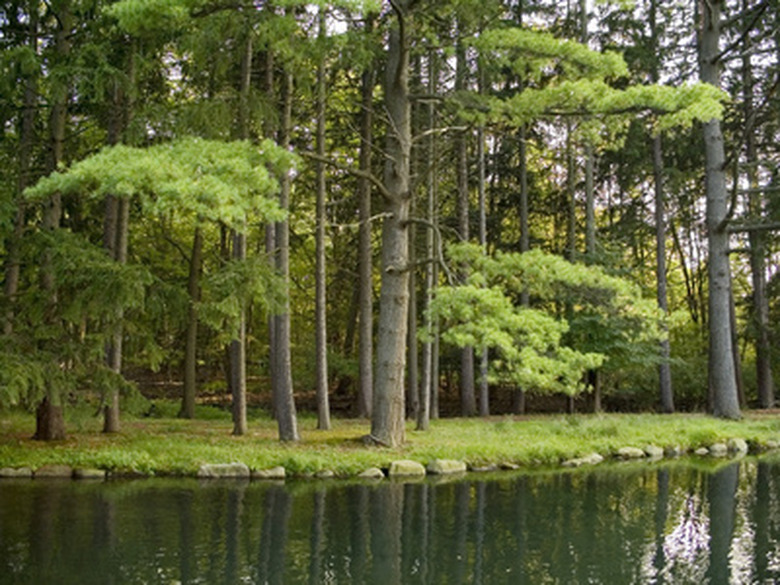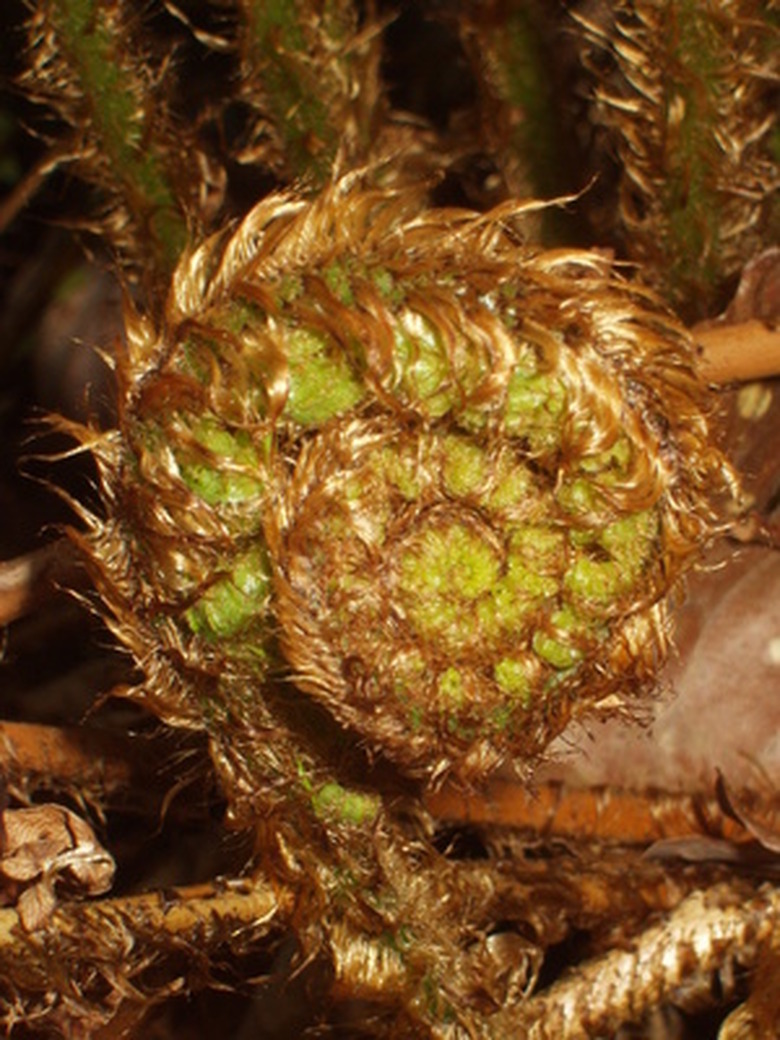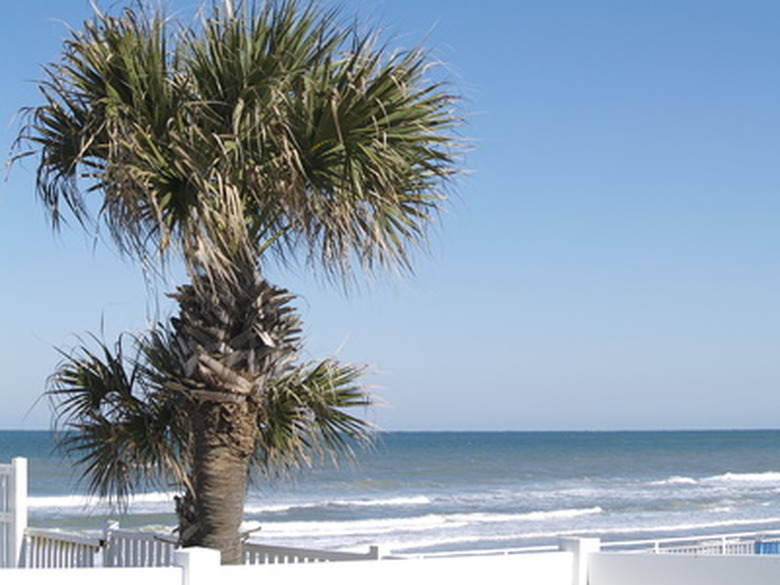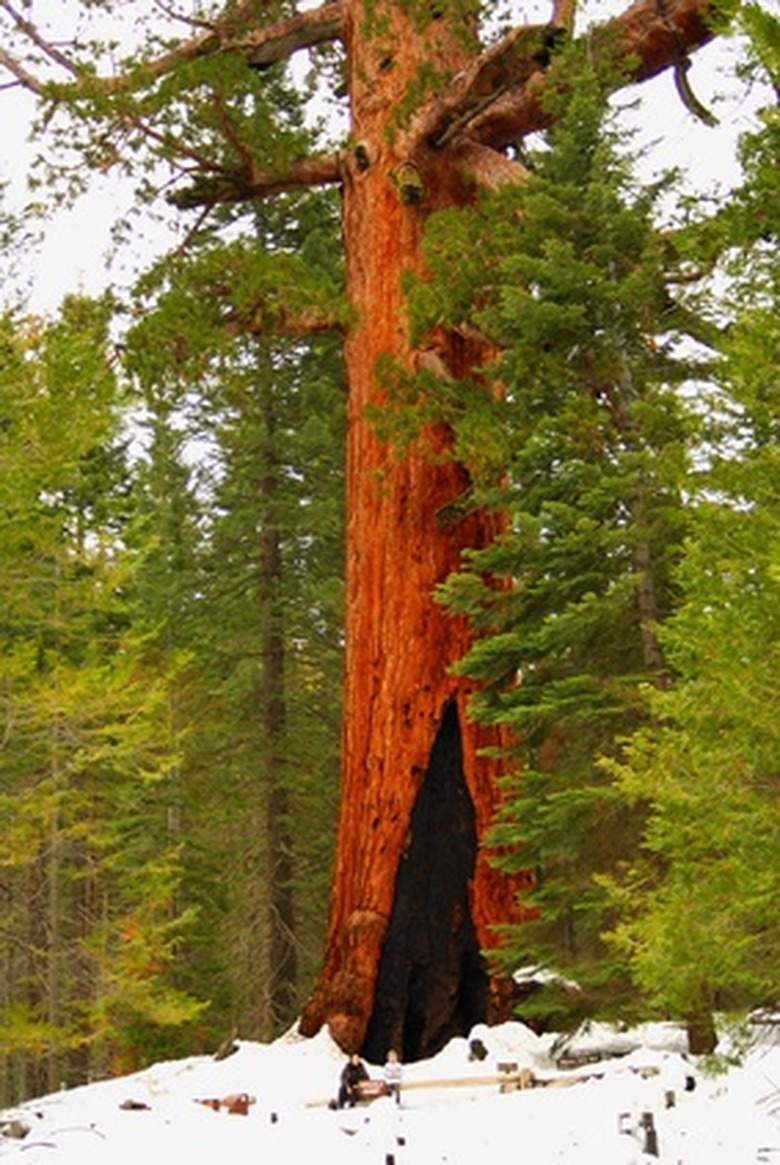Non-Flowering Vascular Plants
Just like animals have blood vessels to conduct oxygen and nutrients throughout the body, vascular plants have tissue that transports water and minerals from the roots and sugars produced by photosynthesis from the leaves. Aside from primitive mosses and algae, all plants are vascular. While the flowering varieties may be more familiar, nonflowering plants still populate the world and illustrate the progress of botanical evolution.
Club Mosses
About 300 million years ago, club mosses were the most common plants in the forest. They represent the transition from tiny nonvascular mosses to the vascular plants that dominate today. They achieved significant evolutionary advancements by developing more extensive branches and roots. Club mosses underwent mass extinction in the Permian era, and only about 900 species remain today. Club mosses are most common underground, and they are one of the major sources of coal.
- Just like animals have blood vessels to conduct oxygen and nutrients throughout the body, vascular plants have tissue that transports water and minerals from the roots and sugars produced by photosynthesis from the leaves.
- About 300 million years ago, club mosses were the most common plants in the forest.
Ferns
Ferns are the oldest vascular plants on earth, having experienced their dominant period about 300 million years ago. The first ferns developed seeds from which gymnosperms and angiosperms–seed-bearing plants–have evolved. Ferns are distinct from other plants because they reproduce with spores, not seeds. Ferns produce millions of spores in a lifetime, counting on the unlikelihood that one will fall to the ground in an ideal location and flourish into prothallia, tiny heart-shaped plants that produce sperm and eggs that, when fertilized, grow into ferns.
Cycads
Cycads are an ancient type of tree that flourished during the Jurassic period, first appearing in the region that is Pennsylvania today and spreading all over the world. Today, cycads grow in tropical and subtropical regions of the world, and many are in danger of extinction in the wild, although the popularity of cycads as house and garden plants has helped preserve them in captivity. Although cycads do not produce flowers that attract pollinators, they do produce heat and scents that attract certain insect pollinators. One of the most common cycads is the sago palm.
- Ferns are the oldest vascular plants on earth, having experienced their dominant period about 300 million years ago.
- Ferns produce millions of spores in a lifetime, counting on the unlikelihood that one will fall to the ground in an ideal location and flourish into prothallia, tiny heart-shaped plants that produce sperm and eggs that, when fertilized, grow into ferns.
Conifers
Conifers include the most familiar nonflowering vascular plants. They were among the first plants to populate the land 300 million years ago, when they were a common food source for herbivorous dinosaurs. Today, conifers include the tallest and oldest trees. Conifer trees do not produce seeds inside of flowers but, instead develop seeds exposed on cones. Although the classic conifer is the evergreen tree, some conifers, such as the cypress, shed their leaves in the fall.



